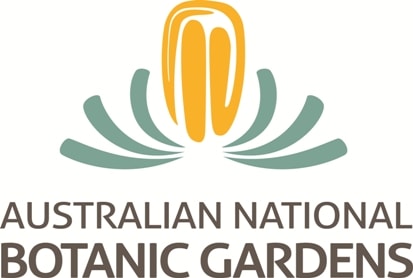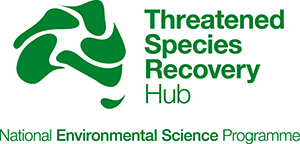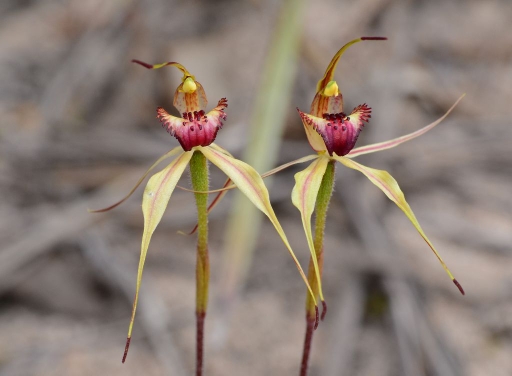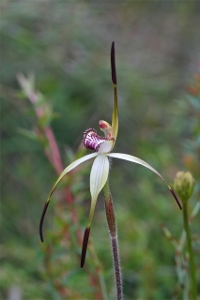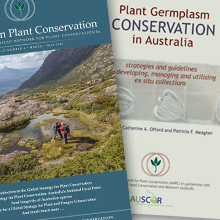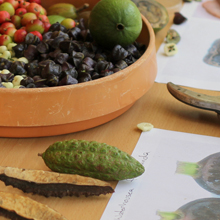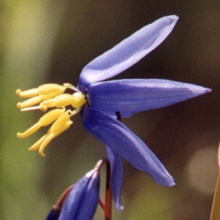WELCOME TO THE ANPC
THE NATIONAL NETWORK THAT LINKS PEOPLE, RESEARCH AND ACTION IN PLANT CONSERVATION
WA Threatened Plant Translocation Workshop – Perth, Thursday 14 March 2019
SAVE THE DATE!
Hear presentations on threatened plant translocations and obtain an overview on the new 3rd Edition of the ANPC’s Guidelines for the Translocation of Threatened Plants in Australia. The Workshop will cover all aspects of the Guidelines, including preparing a translocation proposal, seed collection, gene pool mixing, long term monitoring, policy, approvals and licencing requirements. Learn about best-practice translocation and network with others working in the field! Speakers will include some who have contributed to the new edition of the Guidelines including David Coates, Margaret Byrne and Leonie Monks from the Department of Biodiversity Conservation and Attractions (DBCA), as well as Lucy Commander, Translocation Project Officer with the ANPC. Draft program will be available and registrations will open soon!
12th Australasian Plant Conservation Conference (APCC12) held 12 to 16 November 2018 in Canberra
The Centre for Australian National Biodiversity Research (CANBR) at CSIRO, and the Australian Network for Plant Conservation hosted the 12th Australasian Plant Conservation Conference (APCC12) at the CSIRO Discovery Centre in Canberra. Participants attended an exciting week of presentations, local field trips and a 1-day threatened plant translocation workshop! To coincide with the release of the Third edition of the ANPC’s Threatened Plant Translocation Guidelines, APCC12 brought conservation researchers and practitioners together from across Australia to discuss the recent advances and latest scientific findings for successful threatened plant translocations. Species translocations have been an important conservation approach for more than two decades to save threatened species from extinction. With no foreseeable reduction in threats from climate change, urban and agricultural expansion and intensification, and invasive pests and diseases, translocations will be increasingly important into the future. Click here to see the Conference Program and abstracts, presentation slides and photos. You can also go to the ANPC’s Twitter page to see more photos from the week and read the conference commentary.

APCC12 Participants. (Photo: Nathan Emery)
 ANPC’s Translocation Guidelines launched!
ANPC’s Translocation Guidelines launched!
Threatened Species Commissioner, Dr Sally Box, launched the 3rd edition of the ANPC’s Guidelines for the Translocation of Threatened Plants in Australia at the APCC12 Welcome Reception on 11 November 2018. Watch the launch videos here! Dr Sally Box, Prof Brendan Wintle, Dr Judy West. With input from over 30 experts across the country, 23 new case studies, all new colour photographs illustrating translocation techniques and updated references, the Guidelines are essential reading for all those involved in translocation projects. They provide step-by-step information on how to do best-practice translocations, improve translocation success and contribute to preventing plant extinctions. The ANPC would like to thank the Threatened Species Recovery Hub for funding this revised edition, the ACT Environment, Planning and Sustainable Development Directorate for the printing, project manager Lucy Commander and all the expert authors and steering committee members. Purchase your copy of the guidelines here.


Dr Sally Box launching the 3rd edition of the ANPC’s Translocation Guidelines. (Photos: Nathan Emery and Jo Lynch)
Purchase the 2019 ANPC calendar today!
The 2019 ANPC calendar features 12 threatened plants from the ACT Region being promoted by the 12th Australasian Plant Conservation Conference, to highlight some of the many endangered plants in and around the territory. All but one are listed as vulnerable, endangered or critically endangered at the national level. The profits from the sale of the calendar will be directed towards ANPC projects aiming to raise community awareness of threatened plant species and endangered ecological communities throughout Australia. Discount for ANPC members! Order here.
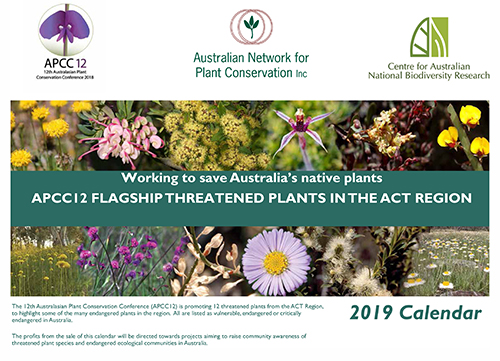
Saving the federally listed Metallic Sun-orchid and Wimmera Spider-orchid from weed invasion
The Metallic Sun-orchid (Thelymitra epipactoides) and Wimmera Spider-orchid (Caladenia lowanensis) are two of Australia’s most endangered plants. The ANPC and Parks Victoria Little Desert Region have recently collaborated under a Victorian Government Communities for Nature grant to undertake weed control over two years within a reserve near Nhill in western Victoria, to support the National Recovery Plans for both species by treating the introduced weed Perennial Veldt Grass (Ehrharta calycina). Read more.
The endangered Wimmera Spider-orchid (Caladenia lowanensis). (Photo: Royal Botanic Gardens Victoria)
Conservation of the endangered Melblom’s Spider-orchid (Caladenia hastata)
The aim of this project, funded by Portland Aluminium, is to increase the long term viability of the Melblom’s Spider-orchid (Caladenia hastata) by re-introducing this species into three sites in the far south west of Victoria. The long term aim of this project is to reduce the species from Federally Endangered to Federally Vulnerable under the EPBC Act (1999). Over the 2015-16 financial year, seed and mycorrhiza have been collected and 200 plants propagated which are currently housed at the Royal Botanic Gardens Victoria Orchid Conservation Laboratory in partnership with the ANPC. Three hundred and twenty one plants were re-introduced. The re-introductions to date have been highly successful with an 80% survival rate. Read more.
Melblom’s Spider-orchid (Caladenia hastata) which is endangered at the National and State Level (Photo: Len Carrigan)
Climate-ready revegetation. A guide for natural resource managers
This new publication by Nola Hancock, Rebecca Harris, Linda Broadhurst and Lesley Hughes provides information on how to use on-line tools to gauge if existing vegetation (species and local populations) are likely to be suitable as the climate changes. To make these decisions, information on climate projections for the revegetation site, the climatic tolerance of the existing species (as indicated by the species’ distribution), and the likelihood of survival of local populations are required. The Guide provides step-by-step instructions on how to (1) find and use on-line regional climate projections for a local site; (2) evaluate which plant species will be suitable at the site in the future; and (3) consider which strategy for selecting provenances will increase the likelihood of the local population surviving in the future? These steps are designed to acknowledge uncertainties about the nature and scale of physical change and to develop strategies that are as robust and climate-ready as possible, given our current knowledge base. The publication is available as a hard copy booklet, on this website and can be downloaded as a pdf here. The ANPC is proud to be hosting this publication on behalf of the authors.
Bring Back the Banksias
The ANPC’s ‘Bring Back the Banksias’ project aims to assist in improving the conservation status of Silver Banksia (Banksia marginata) in Victoria and south-western NSW where it has undergone considerable decline. Stage 1 of this project, supported by the Norman Wettenhall Foundation, was recently completed. The location and distribution of known relict or remnant populations of this iconic species were collated and documented to guide future genetic research, seed collection strategies for the establishment of Seed Production Areas and future field restoration works. 6 workshops have also been held, with the most recent at Lake Bolac on 24 February 2017 which outlined what has been happening recently with regards to Silver Banksia research, mapping, genetics and seed orchards. Click here for more information on the project and to download the report on the Lake Bolac workshop. Further funding is now being sought for Stage 2 of the project.
Watch this ABC Open video, by filmmaker Richard Snashall, of the Sandhill Paddock Walk near Hay NSW held in September last year
Organised by the ANPC and Riverina Local Land Services, and led by ANPC Project Manager Martin Driver, the Sandhill Paddock Walk focused on ‘Sandhill Pine Woodland in the Riverina’ which is listed as an Endangered Ecological Community in NSW. The aim was to increase plant identification skills and highlight the importance of revegetation. The extraordinary rainfall in the Riverina last winter resulted in an explosion of native plant growth and germination at both properties visited. https://open.abc.net.au/explore/180752
ANPC Project Manager, Martin Driver (left), discussing remnant sandhill vegetation at the fenced reserve at “Zara” on the Sandhill Paddock Walk on 15 September 2016. (S. Ware)
National Standards for the Practice of Ecological Restoration in Australia
The ANPC has been a major partner in the development of these national standards over the last three years with the Society for Ecological Restoration Australasia (SERA). They are designed to encourage all restoration and rehabilitation projects in Australia to reach their highest potential. Read the standards here.
Find out about:
- What we do and why we do it
- Our capabilities
- How you can help – membership, sponsorships, donations, bequests, project support, collaboration, volunteering.
Please don’t hesitate to contact us if you would like to obtain a hard copy of the prospectus or to discuss the possibilities for your involvement.
SUPPORT US
The ongoing development of this website was assisted by the New South Wales Government through its Environmental Trust

ANPC Gold Sponsor:
